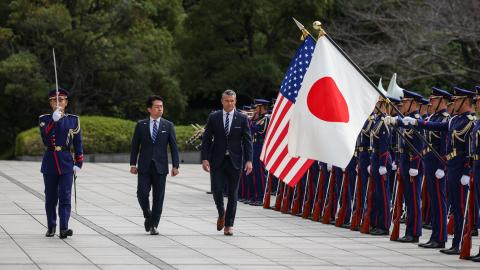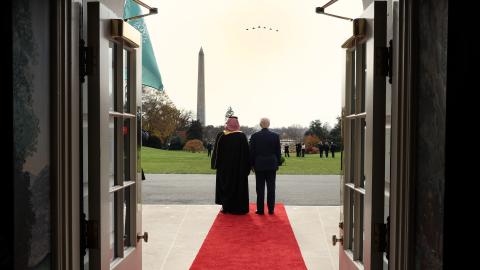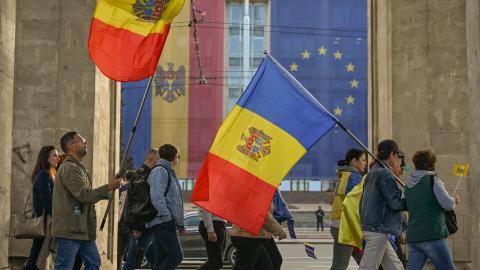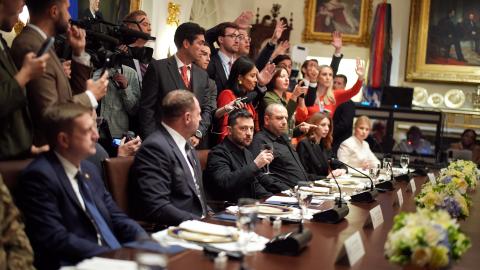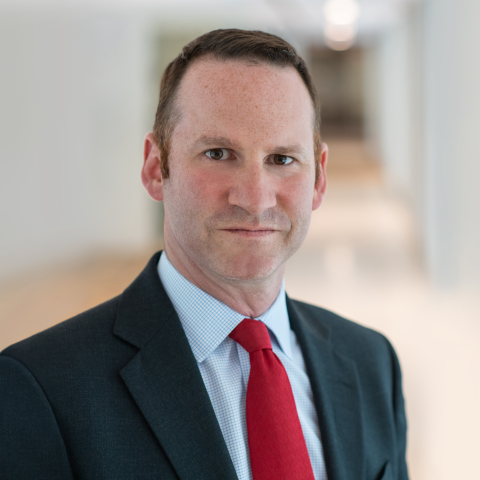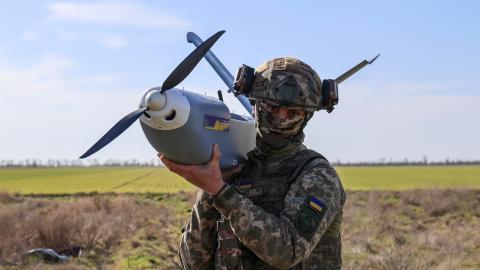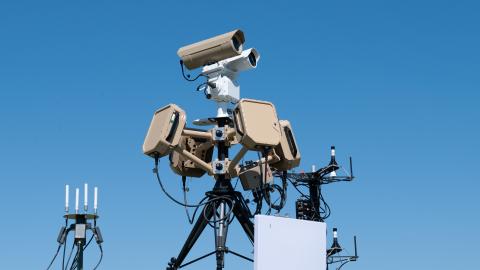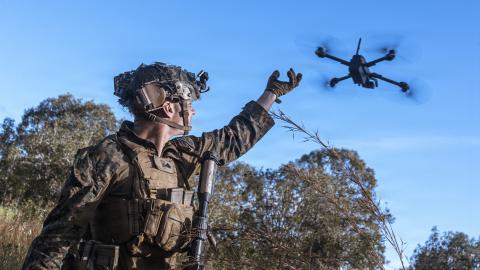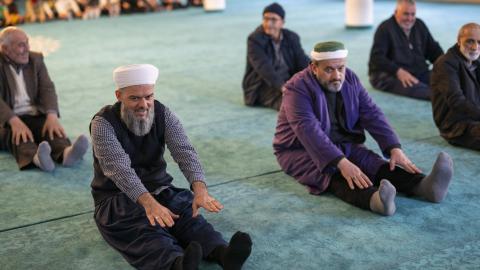Online communities have changed the way people and groups interact with religion and identity, providing new spaces from where to challenge religious authority and offering alternatives to long-standing traditions. The last years have witnessed the rise of a new generation of Muslim social media influencers who are skilled in the art of digital storytelling and highly embedded in global online culture. Highly skilled in content production, these influencers have carved out niches where they build communities and present alternative visions of Muslim identity, rooted in contemporary lifestyles.1
The rise of digital technologies has enabled these content creators—and their followers—to produce, distribute, and engage with religious contents in unprecedented ways. Like other digitally connected communities, young Muslim millennials are mostly urban, well-educated, and technologically savvy. As a result, the practice and communication of Islam are undergoing significant transformations, shifting away from institutionalized settings toward more personalized, visually driven forms of interaction.2
Therefore, considering the above, and just as new terms like “muslimpreneurs”3 and “hijabers”4 have been coined to describe new digital expressions of Muslim identity, this article explores a new form of online pious activism that merges ultraconservative Islamic practices and contemporary fitness culture—an intriguing phenomenon I humbly propose to term “Salafitness.”
Although seemingly innocuous, the rise of Salafitness deserves close examination, as it mirrors broader trends of social isolation, ideological rigidity, and the potential for radicalization within closed networks. While contact sports and fitness activities have often been promoted as positive alternatives for young individuals at risk of social marginalization, Salafitness presents a more complex dynamic. Unlike such initiatives that seek integration and broader social benefits, Salafitness often fosters exclusionary identities that may undermine social cohesion. Recent cases in Europe have raised concerns about how fitness-based religious movements might serve as gateways to more extreme interpretations of Islam, and similar patterns have been observed in other ideological movements, where fitness subcultures have played a role in fostering extremist identities. From neo-fascist fight clubs to mixed-martial arts (MMA) networks linked to jihadist recruitment, physical training has proven to be a means of exclusivist in-group cohesion and, in some cases, a pathway to radicalization.
What Is “Salafitness”?
A neologism by definition, Salafitness is a term proposed to label a new phenomenon among certain Muslim communities, especially young men, which blends the religious rigor of Salafism with the physical discipline of fitness and calisthenics. This blending fosters community, enhances personal piety, and promotes a distinct socio-religious identity. However, it also raises questions about ideological insularity, social integration, and even the potential for extremist behaviors and radicalization. Crucially, Salafitness is inextricably linked to a strong communicative and visual component, with a significant presence on social media—thus giving rise to figures such as the Dutch “Ek.Anon,” the British “J4hedul,” or the American Hiwa Busally, each of them with hundreds of thousands of followers across different social media platforms.5
The rise of Salafitness can be attributed to several socio-cultural dynamics. In an era in which social media and online platforms are at the forefront of building individual and collective identities,6 Salafitness groups have crafted highly effective communication strategies for disseminating their ethos through platforms such as Instagram, YouTube, and TikTok. Their content seamlessly combines physical and religious elements, showcasing muscular bodies, workout routines, and halal dietary recommendations alongside collective prayers, fasting tips, and advice on integrating fitness with religious observance. This combination serves as a powerful visual representation of their ideals, attracting followers—particularly those with a fragile sense of identity in the Western world—who seek both spiritual fulfillment and a sense of belonging.
As the ideological backbone of this phenomenon, Salafism provides both the theological framework and the moral imperative for the fusion of religious piety and physical discipline that defines Salafitness. This interpretation of Islam seeks to emulate what its adherents consider the purest form of the faith, modeled after the practices of the Prophet Muhammad and the lived example of the earliest generations of Muslims.7 Within Salafitness, this doctrinal foundation manifests not only in theological doctrine but also in aesthetic and behavioral markers. While traditional Salafi aesthetic markers and practices—such as long beards, trimmed mustaches and modest clothing—remain central to signaling piety, adherents have adapted to the physical demands of intensive exercise.
Bestowing Piety Upon Strength: The Salafitness Ethos
In Islam, physical well-being is a way of developing one’s spiritual life. It is about nurturing a healthy body and soul and maintaining a proper balance between the two. Through a healthy body, a believer can better fulfill religious obligations and engage in acts of worship with more energy and focus. Muslims believe that their bodies have been entrusted to them by God (amāna)8 only temporarily, and thus the endeavor to maintain one’s body in good health is not just a personal choice but a religious obligation.9 Indeed, Islamic teachings classify physical activity as mustaḥab or 10—recommended practices that are beneficial for the body and the spirit. This religious emphasis on physical activity reinforces the idea that good health is not just a personal or aesthetic pursuit, but a moral and religious one.11
To further reinforce the principles of stewardship of the body and encouragement of physical activity, adherents of the Salafitness movement frequently draw from Quranic verses and aḥādīth. The most cited verse of the Quran among different Salafitness communities is Quran 2:195, “Spend in the Way of Allah and do not cast yourselves into destruction with your own hands; do good, for Allah loves those who do good.” Various aḥādīth like “Your body has a right over you”12 and “A strong believer is better and is more lovable to Allah than a weak believer”13 are also frequently cited to highlight the importance of physical well-being as an act of religious devotion. Another widely cited ḥadīth states: “There are two blessings that many people are deceived into losing: health and free time.”14 This narration serves as both a motivational exhortation and a moral imperative, summoning believers to make the most of their physical capabilities and available time before this opportunity is lost.
The ethos of Salafitness is rooted in the belief that physical fitness and religious devotion are not mutually exclusive but rather complementary. Indeed, for Salafitness practitioners, being fit is more than just a personal goal—it is a path towards attaining righteousness and discipline. By framing physical exercise as a form of worship, advocates of Salafitness promote the idea that strength and well-being are key to fulfilling one’s religious obligations. In addition, by advocating for a strict religious observance and physical exercise as a shield against the temptations and distractions of worldly influences (dunyā),15 Salafitness presents itself as a morally superior alternative to other lifestyle choices that may be appealing, particularly during the often-turbulent period of adolescence and early adulthood.
A second key element in Salafitness is the emphasis on discipline, both moral and physical. In the same way religious practice requires commitment, perseverance, and self-restraint, so does intensive physical training. The rigorous regimen of fitness routines is framed as a way to cultivate 16 through the development of habits of self-control and endurance. Through structured workouts and strict dietary guidelines, Salafitness practitioners cultivate discipline as the basis for both physical and spiritual purification.
Aside from individual spiritual gains, physical exercise is also encouraged as a way of contributing to the community through acts of charity and service.17 Islam places great emphasis on helping others, and Salafitness adherents argue that being fit enables believers to better serve those in need—whether that is through physically demanding charitable work, protecting their families, or even defending the ummah if necessary. This idea fits within larger Islamic narratives about resilience, responsibility, and communal solidarity, reinforcing the notion that physical fitness is not merely an individual endeavor but a way of fulfilling both religious and social obligations.
The Paradox of Community and Isolation: The Social Dynamics of Salafitness
At the heart of Salafitness lies a paradox: it promotes a culture of brotherhood and belonging, yet it also encourages a withdrawal from mainstream society, reinforcing a distinct and often exclusionary identity. Salafitness communities cultivate religious and physical discipline through virtual and in-person networks in which strength, purity, and commitment to a higher cause define one’s place in the community. Still, the movement’s emphasis on communal self-sufficiency and religious exclusivity raises questions about its role in shaping social and religious dynamics—particularly in non-Muslim societies.
This is particularly evident in the promotion of private, Salafitness-exclusive spaces that limit membership to devout followers. While Salafitness originates in the digital sphere, its influence has extended far beyond social media. Groups that began as online communities now frequently organize meetups, workshops, training sessions, and fitness camps where followers can deepen their commitment to the movement. In fact, meetings between like-minded Salafitness groups from different countries are not unusual. The cases of “Full Force” in the Netherlands or “The Basin Movement” in the UK are indicative: what began as an Instagram-based fitness-calisthenics project has evolved into a self-described “army of brothers” with a highly developed system of frequent in-person events. These sessions are often presented as more than just workouts—they are spaces where ideology is strengthened, bonds are formed, and a sense of belonging is solidified.
Moreover, there are also some Salafitness communities that have established closed gyms where membership seems to be controlled based on religious adherence. These clubs are exclusive to men of the same ideological leaning, reinforcing an alternative social structure that exists in parallel to mainstream fitness culture. By imposing strict religious and social boundaries, such initiatives not only cultivate physical discipline but also serve as a means of self-imposed segregation from the wider society.18
A recurring theme in Salafitness discourse is the idea of a higher, divinely mandated path that sets adherents apart from the broader society. Slogans such as “19Unity, Brotherhood” encapsulate this notion, presenting religious devotion, community cohesion, and a tight-knit support system as the defining features of the movement. Likewise, other recurrent mottos such as “Work Hard, Pray Harder” reinforce the idea that spiritual commitment must parallel physical effort, turning both into indicators of piety and discipline.
A key ideological pillar of Salafitness communities is the concept of jamāʿa20—widely used in a variety of Islamist endeavors—which is central to both their communicative strategies and group identity. Inherent to the concept of jamāʿa is the notion of order, which stands in opposition to chaos and division (fitna)—forces that, according to these communities, the West seeks to instigate among Muslims. “The community (jamāʿa) is mercy, and division is torment”21 is a commonly used ḥadīth to reinforce this principle. Analyzing the use of jamāʿa across different Salafitness networks reveals that it serves two primary functions: first, it serves as a recruitment tool, aiming to attract new members to the community; and second, it functions as a mechanism of internal cohesion, acting as a safeguard against both internal schisms and external influences.
As Salafitness communities become increasingly self-contained, they risk fostering an exclusionary ideology where engagement with broader society is discouraged. In its most extreme forms, this ideological isolation can pave the way for extremist interpretations of religion, where adherents see themselves as distinct from, or even in opposition to, non-believers and secular influences. Furthermore, the emphasis on physical strength as both a religious and communal imperative reinforces a militant undertone in some Salafitness circles. The rhetoric of “defending the ummah” and “being part of an army” used by some of these communities, coupled with the glorification of physical endurance, can potentially blur the lines between spiritual resilience and ideological militarization. This phenomenon is particularly concerning in contexts where disenfranchised young men seek belonging and purpose, as it creates fertile ground for the development of rigid, insular communities that resist integration into pluralistic societies.
While Salafitness presents itself as a path to self-improvement and religious righteousness, its emphasis on exclusivity, dogmatism, and separation are grounds for concern regarding its long-term impact on social cohesion. By structuring life around a distinct set of religious and physical commitments, adherents are not only shaping their personal identities but also constructing alternative communities that challenge mainstream social norms. Thus, the movement represents a double-edged sword: for some, it is a source of strength and stability, while for others, it becomes a mechanism of withdrawal from broader society.
From Discipline to Radicalization: Examples of the Intersection of Physical Training and Identity in Extremist Movements
Throughout history, religious movements have placed great emphasis on physical strength and combat readiness, often depicting them as necessary virtues in the defense of faith and community. This combination of spirituality and physical prowess is neither new, nor exclusive to any single tradition; rather, it can be found across various ideologies like white supremacist organizations, Christian nationalist militias, and even neopagan extremist groups.
Fascist and ultra-nationalist movements have historically emphasized physical strength and combat training not only as a means of cultivating ideological discipline but also as part of a broader aesthetic project. Yukio Mishima, for example, was deeply invested in the samurai ideal, constructing an ultranationalist vision in which physical perfection reflected moral and ideological purity. Similarly, the Rashtriya Swayamsevak Sangh (RSS) in India incorporates paramilitary drills under the guise of martial arts, reinforcing a vision of disciplined, militant masculinity. The most infamous historical example remains the Nazi regime, where physical fitness was central to the aestheticization of power—projected through Leni Riefenstahl’s propaganda films, the militarized youth culture of the Hitlerjugend, and the 1936 Olympics, all of which framed the idealized body as an expression of physical and ideological supremacy.
In recent history, several extremist groups with religious underpinnings have integrated fitness and combat training into their operational frameworks. Fitness culture has been central to radical identity building within white supremacists and neo-fascist movements across North America and Europe. One of the most illustrative examples is the Rise Above Movement (RAM), a US-based white supremacist organization. RAM members actively promote martial arts and combat training as paths of personal self-improvement and militant preparation. The group’s ideology frames physical fitness to embody the warrior ethos of their imagined ancestors, preparing for what they perceive as an impending racial conflict. This emphasis on physical strength is not merely about health or aesthetics; it serves as a visible indicator of ideological commitment and a tool for fostering in-group solidarity.22
Similarly, The Base, another neo-Nazi group, has established paramilitary training camps to equip members with combat skills. These camps are intended to prepare individuals for a so-called “race war,” blending physical conditioning with white supremacist indoctrination. These practices underscore the role of structured physical training in fostering a sense of belonging and mission among adherents, while simultaneously advancing their extremist agenda.23
Beyond explicitly white supremacist organizations, neo-pagan identitarian movements have also taken up physical training as a core component of their identity. Odinist groups like the Asatru Folk Assembly provide one more example of the blending of physical training and extremist ideology. While not explicitly religious, groups like the Asatru Folk Assembly promote physical fitness to create a sense of continuity with a mythicized past and as a means of embodying the “warrior spirit” of their ancestors, while preparing for a forthcoming war and building a cohesive and militant community.24
But the intersection of physical training and radicalization is not unique to secular extremist groups; it also occurs in religiously motivated groups. The case of Michael Patrick Caughran, a retired U.S. Air Force survival expert, exemplifies the intersection of religious nationalism and paramilitary training. Operating under the umbrella of American Reconstruction Concepts (ARC), Caughran offers survival and live-fire combat training that attract individuals from law enforcement and military backgrounds. These courses are filled with Christian nationalist rhetoric, and they attempt to prepare participants for perceived threats against their religious and national identity.25
The Radicalisation Awareness Network (RAN) has highlighted the strategic use of sports, particularly combat sports like mixed martial arts (MMA), by identitarian right-wing extremist groups as a tool for recruitment and radicalization. These groups use the discipline, structure, and physical prowess associated with such sports to recruit and indoctrinate young men and instill a sense of belonging based on extremist ideologies.26
The role of combat sports in radicalization is also evident in radical Islamist milieus, where physical training is systematically paired with ideological indoctrination. The rigorous training regimes and the sense of belonging that dominate MMA clubs can provide fertile soil for radicalization, offering a sense of identity and purpose that can be co-opted by extremist ideologies. This phenomenon is especially prevalent in the Caucasus region, where wrestling and combat sports are part of the region’s cultural traditions. In fact, the region has produced a significant number of foreign fighters who, prior to joining jihadist organizations in Syria and Iraq, were active members of combat sports clubs or training groups where they honed their physical skills through sporting activities like wrestling, boxing, and mixed martial arts.27 Two stark examples of this dynamic are the Tsarnaev brothers, of Chechen descent, who perpetrated the Boston Marathon bombing—both of whom practiced MMA28—and the Chechen-born refugee Abdoulakh Anzorov, who had been part of a predominantly-Chechen MMA club in Paris and beheaded the French secondary school teacher Samuel Paty in 2020.29
However, this phenomenon is not confined to individuals from the Caucasus. A strong example of the intersection of martial arts training and jihadist recruitment is that of the An-Nur Mosque in Winterthur, Switzerland. Several members of this now-shuttered mosque established an exclusive martial arts gym for Muslim men, operating under a strict interpretation of Islam. The facility not only provided combat sports training but also served as a space for ideological reinforcement, attracting young members from the mosque’s congregation. A total of eight individuals who participated in these training sessions left Switzerland to join ISIS in Syria and Iraq.30
While leading Salafitness figures present their movement as centered on discipline, piety, and community identity, this growing phenomenon mirrors elements found in movements that have historically strayed into radicalization. In fact, recent arrests in Spain provide a concrete picture of how far fitness social media influencers can serve as radicalization nodes within jihadist networks. In early 2025, Spanish authorities, in coordination with Moroccan intelligence and EUROPOL, dismantled a jihadist recruitment cell operating under the guise of fitness influencing. 31 The individuals involved allegedly embedded jihadist propaganda—including 32 and official ISIS material—into their workout content while promoting calisthenics and self-defense training. 33 Among those detained was “Nordin Workout,” a well-known influencer within the Spanish-speaking Muslim fitness community, who investigators accuse of using his influence to lure and manipulate young followers under the pretext of self-improvement and religious devotion. 34 Although the case remains under judicial review, Spanish authorities have linked his activity to a broader transnational network, emphasizing the ease with which jihadist actors exploit digital fitness subcultures to disseminate propaganda and groom potential recruits.
This case is particularly indicative of the broader dynamics of the Salafitness phenomenon and concerns about it as a source of radicalization. Although these communities are prone to defining themselves on the basis of self-discipline and religious devotion, their emphasis on exclusivity, physical conditioning, and ideological cohesion raise questions about how such spaces may evolve over time.
Conclusion
The emergence of Salafitness is a fascinating yet concerning development at the intersection of religion, fitness, and digital culture. On the surface, the movement advocates self-discipline, community engagement, and physical and spiritual well-being as a path to self-improvement, blending physical health with religious devotion in a way that resonates with youth. Behind this veneer of piety and discipline, however, lies a more complex reality—one marked by ideological insularity, social segregation, and the potential for radicalization. As this article argues, Salafitness is not merely a benign fitness trend; it also reflects broader societal challenges, including the allure of closed communities, the appeal of rigid ideological frameworks, and the risks posed by the militarization of physical training.
At its core, Salafitness embodies a paradox. Although it fosters a sense of brotherhood and communal solidarity among its adherents, the Islamic fundamentalism inherent in the narratives disseminated by prominent members also implicitly encourages a withdrawal from mainstream society. This duality is evident in the movement’s emphasis on exclusive spaces: by creating segregated gyms, private training sessions, and online communities, Salafitness practitioners construct alternative social structures that exist in parallel to, and often in opposition to, mainstream fitness culture. Slogans such as “Deen, Unity, Brotherhood” and the rhetoric around self-defense framed in religious terms as both a spiritual and physical shield against the perceived moral decay of secular societies echo dynamics observed in other Islamist movements. Such elements, when reinforced within closed social structures, can gradually shift adherents toward a worldview in which purity is measured through both physical rigor and rejection of external influences. Although this can provide a sense of purpose and belonging to some, it also raises concerns about the long-term impact on social cohesion, particularly in plural societies where integration is itself challenging.
Apart from that, the potential for radicalization within Salafitness communities cannot be overlooked. The movement’s emphasis on physical strength as a religious virtue, communal loyalty, and ideological purity mirrors elements found in other extremist groups that have historically used physical training as a tool for indoctrination and mobilization. The glorification of strength as a form of religious duty, coupled with the rhetoric of defending the ummah, blurs the line between spiritual resilience and ideological militarization. This is particularly concerning in contexts where converts and second-generation, disenfranchised young men grapple with identity crises. The recent arrest of Salafitness influencers in Spain accused of embedding jihadist propaganda into their content shows how easily the line between self-improvement and radicalization can be crossed. Although obviously not all Salafitness practitioners will embrace extremist ideologies, the movement’s insular nature and ideological rigidity create fertile ground for radicalization, especially when combined with the persuasive power of social media.
The rise of Salafitness and similar movements poses significant challenges for law enforcement and security institutions in the West. One of the main difficulties lies in distinguishing between legitimate religious and fitness practices and those that serve as fronts for extremist recruitment. The use of digital platforms adds another layer of complexity, as influencers can reach global audiences with relative ease, disseminating propaganda under the guise of fitness content. Moreover, the transnational nature of these networks underscores the need for enhanced international cooperation. However, even with such collaboration, the volume of online content and the speed at which it spreads make it very difficult to monitor and intervene effectively.
In addition, the ethical and practical dilemma of balancing security concerns with respect for religious freedom and individual privacy is not an easy one to overcome. Salafitness, like other digital religious trends, operates within a legal framework that protects freedom of expression and association. The potential for direct and indirect radicalization inherent to Salafitness shouldn’t be ignored, but how do we identify at which point a movement rooted in self-discipline and faith becomes an incubator for exclusionary, if not radical, ideologies? At the same time, the heightened scrutiny of Muslim spaces risks reinforcing perceptions of unfair treatment, complicating efforts to address genuine security concerns. And perhaps more crucially, how should societies respond to a movement that, while not inherently violent, fosters conditions that may lead to extremism? Striking this balance requires not only vigilance against radicalizing narratives but also efforts to ensure that fitness and faith are not co-opted by exclusionary ideologies.
Lastly, Salafitness is a mirror reflecting the broader tensions of our time: the search for identity in a globalized world, the allure of digital communities, and the fine line between steadfastness and extremism. It is neither an isolated nor an incidental trend but a manifestation of deeper societal transformations—transformations that demand nuanced scrutiny, not only for what they are today but for what they may eventually become. As Salafitness continues to grow, an obvious conclusion emerges from this article: it will be essential to monitor its evolution and adjust strategies accordingly.
